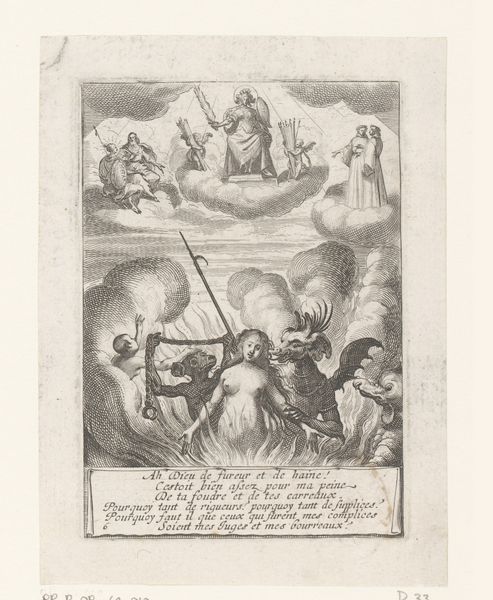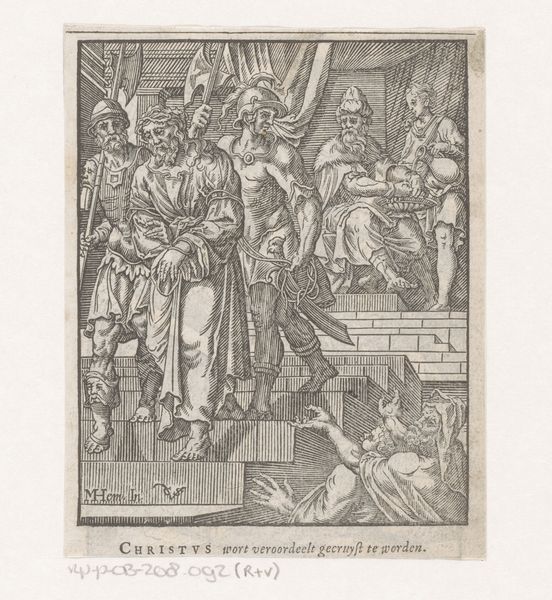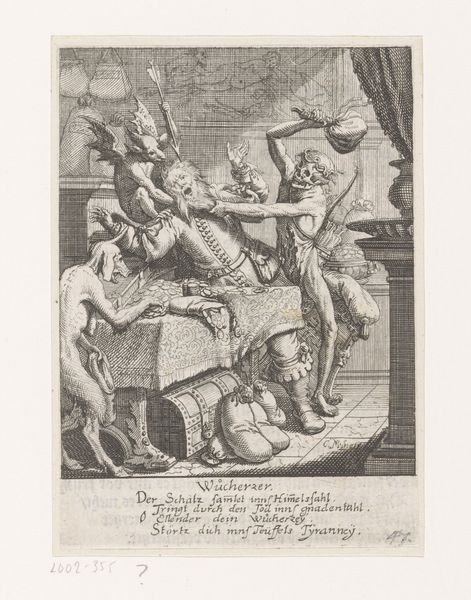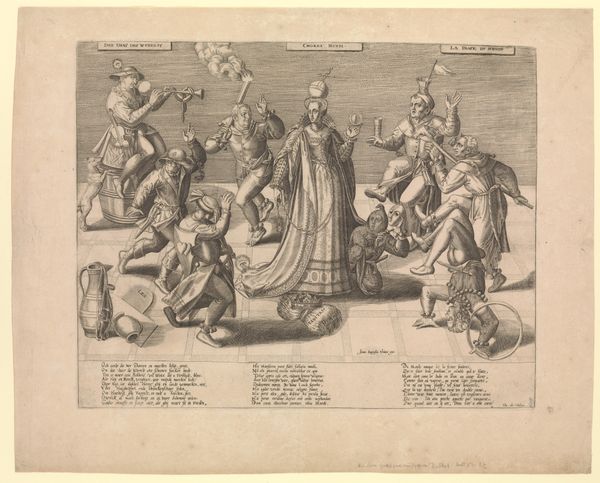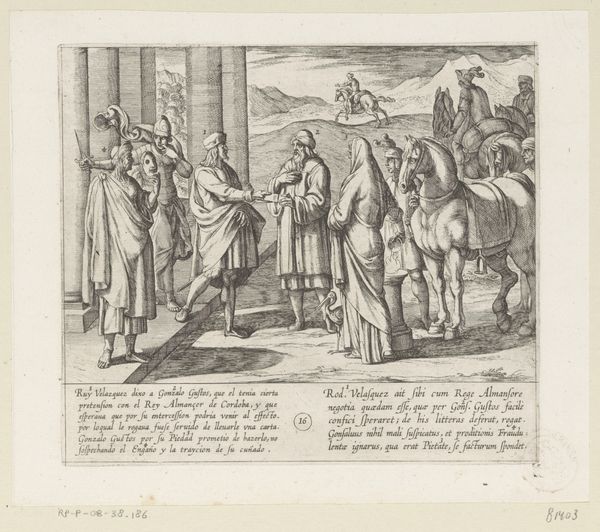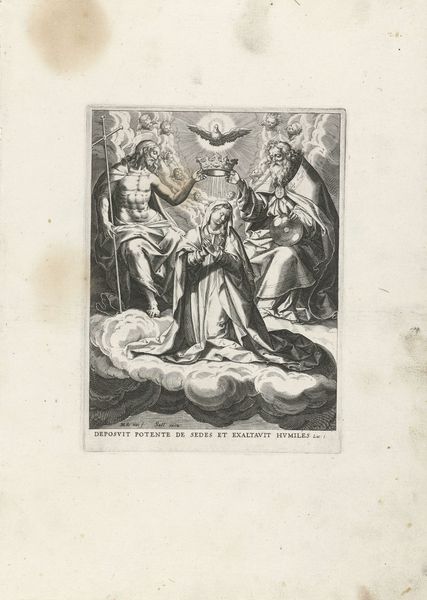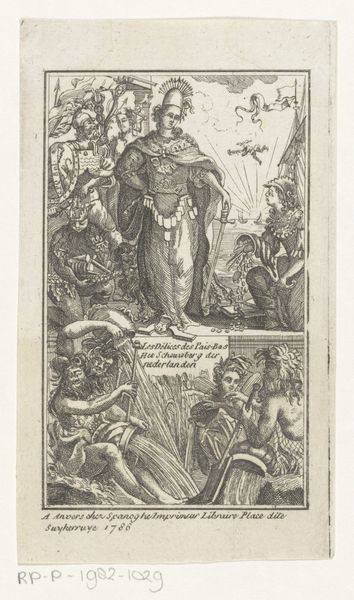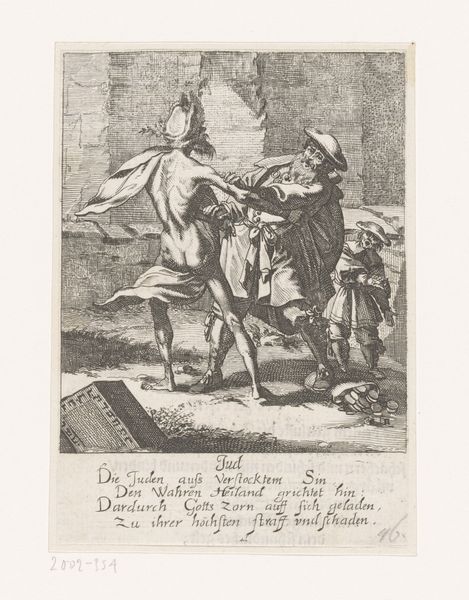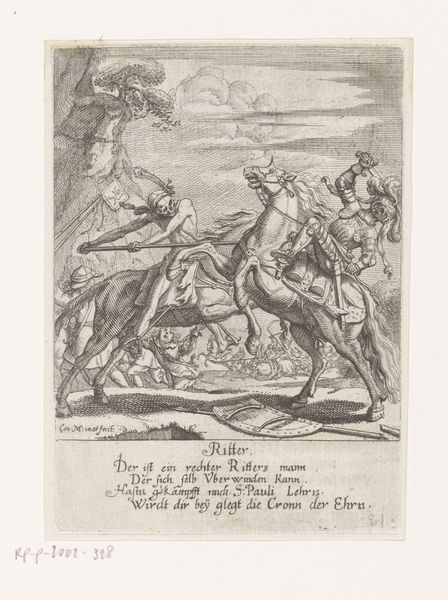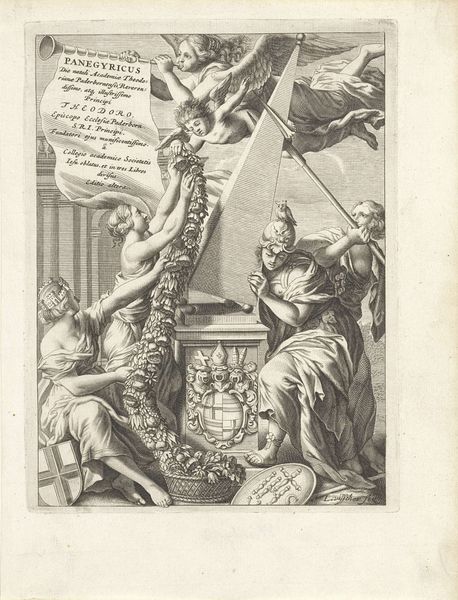
Izebel door een personificatie van de Vroomheid (Piétas) aangevallen 1635
0:00
0:00
abrahambosse
Rijksmuseum
print, engraving
#
allegory
#
baroque
# print
#
old engraving style
#
figuration
#
line
#
history-painting
#
engraving
Dimensions: height 113 mm, width 80 mm
Copyright: Rijks Museum: Open Domain
Abraham Bosse created this engraving, "Izebel door een personificatie van de Vroomheid (Piétas) aangevallen," at an unknown date. It depicts the biblical figure Jezebel being attacked by Piety. Bosse was a French artist, and this work reflects the religious and political tensions of 17th-century France. The image's meaning is created through its visual codes. Jezebel, associated with idolatry and immorality, is shown in a state of luxurious ease, while Piety, armed with a shield, attacks her, backed by divine figures in the clouds. This imagery reflects the Counter-Reformation's emphasis on religious purity and the condemnation of perceived moral laxity, echoing through the various cultural institutions that were in the service of the Catholic church. Consider the institutional context: Bosse was associated with both Catholic and Jansenist circles, and his work often reflects these religious debates. This engraving may critique the decadence of the French court or serve as a warning against religious impurity. To fully understand the print, we can investigate period religious texts, political pamphlets, and the history of French printmaking. Understanding the social and institutional context illuminates the significance of the artwork.
Comments
No comments
Be the first to comment and join the conversation on the ultimate creative platform.
